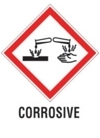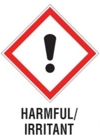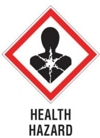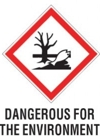| Safety Data Sheet | 115-3821/115-3824 |
|
CircuitMedic, 22 Parkridge Road, Haverhill, MA 01835 USA Phone: 978-373-1600 | Website: www.circuitmedic.com CircuitMedic disclaims all liability associated with the use of this information. |
Revision Date: May 23, 2024
|
| Section 1. CHEMICAL PRODUCT AND COMPANY IDENTIFICATION | |
| Product Name: | Plating Solution, Gold |
| Product Number: | 1 oz: 115-3821, 4 oz: 115-3824 |
| UFI Number: | KPG2-0AUV-R308-49EM |
| Recommended use: | This is an electroplating solution for industrial use only. |
| Supplier: | CircuitMedic 22 Parkridge Road, Haverhill, MA 01835 USA PHONE: 978-373-1600, FAX: 978-372-5700 |
| Emergency Response: | For Chemical Emergency Spill, Leak, Fire, Exposure, or Accident Call CHEMTREC Day or Night Within USA and Canada: 1-800-424-9300 CCN4877 Outside USA and Canada: +1 703-527-3887 (collect calls accepted) |
Safety Data Sheet No. 115-3821/115-3824
CircuitMedic, 22 Parkridge Road, Haverhill, MA 01835 USA
CircuitMedic, 22 Parkridge Road, Haverhill, MA 01835 USA
Page 1 of 8
Revision Date: May 23, 2024
Revision Date: May 23, 2024
| Section 2. HAZARD IDENTIFICATION | |
| Classification | Skin Corrosion/Irritation, Category 1B Acute Toxicity - Oral, Category 4 Eye Damage/Irritation, Category 1 Carcinogenicity, Category 2 Acute Aquatic Toxicity, Category 1 Chronic Aquatic Toxicity, Category 1 |
| Label elements and precautionary statements. | |||||
| Signal Word: | Danger | ||||
| Pictograms: |
|
||||
| Hazards not otherwise classified: | None. | ||||
| Hazard Statements: |
H314 Causes severe skin burns and eye damage. H302 Harmful if swallowed. H351 Suspected of causing cancer. H410 Very toxic to aquatic life with long lasting effects |
||||
| Precautionary Statements: |
P201 Obtain special instructions before use. P202 Do not handle until all safety precautions have been read and understood. P264 Wash hands thoroughly after handling. P270 Do not eat, drink or smoke when using this product. P260 Do not breathe dust, fume, gas, mist, vapors or spray. P280 Wear protective gloves, clothing and eye and face protection. P301_312_330 If swallowed: Call a poison center or doctor/physician if you feel unwell. Rinse mouth, do not swallow. P303_361_353 If on skin (or hair): Take off immediately all contaminated clothing. Rinse skin with water. P304_340 If inhaled: Remove victim to fresh air and keep at rest in a position comfortable for breathing. P305_351_338 If in eyes: Rinse cautiously with water for several minutes. Remove contact lenses, if present and easy to do. Continue rinsing. P273 Avoid release to the environment. P363 Wash contaminated clothing before reuse. P391 Collect spillage. P501 Dispose of contents and container in accordance with local, state, and federal regulations. |
||||
Safety Data Sheet No. 115-3821/115-3824
CircuitMedic, 22 Parkridge Road, Haverhill, MA 01835 USA
CircuitMedic, 22 Parkridge Road, Haverhill, MA 01835 USA
Page 2 of 8
Revision Date: May 23, 2024
Revision Date: May 23, 2024
| Section 3. COMPOSITION, INFORMATION OR INGREDIENTS | |||
| Chemical Name | C.A.S. Number | EINECS Number | Concentration |
| Potassium aurocyanide | 13967-50-5 | 237-748-4 | 4.3% |
| Cobalt ethylenediamine tetraacetate | 14931-83-0 | 239-001-8 | 0.9% |
| Nickel nitrilotriacetate | 34831-03-3 | 252-235-5 | 0.06% |
| Section 4. FIRST AID MEASURES | |
| Inhalation: | Remove patient to fresh air. Immediately call a first response, trained rescue squad. If patient is not breathing, administer artificial respiration. If breathing is difficult, administer oxygen. |
| Skin Contact: | Remove all contaminated clothing and shoes. Wash affected skin areas with plenty of soap and water. Obtain immediate medical attention. |
| Eye Contact: | Flush eyes including under the eyelids with plenty of water for at least fifteen minutes while keeping eyes wide open. Do not rub affected areas. Obtain immediate medical attention. |
| Ingestion: | Remove patient to fresh air. Immediately call a first response, trained rescue squad. Do not induce vomiting unless directed by medical personnel. Never give anything by mouth to an unconscious person. |
| Section 5. FIRE-FIGHTING MEASURES | |
| Suitable extinguishing media: | Use media appropriate for surrounding fire such as foam, extinguishing powder, carbon dioxide or water spray. In case of fire, cool endangered containers with water spray. |
| Unsuitable extinguishing media: | High pressure water jet. |
| Specific hazards in case of fire: | May release toxic hydrogen cyanide fumes upon heating to dryness. |
| Special protective equipment and precaution for fire fighters: | For fires in enclosed areas, wear self-contained breathing apparatus and full protective gear. Do not inhale combustion gases. |
| Section 6. ACCIDENTAL RELEASE MEASURES | |
| Personal precautions, protective equipment and emergency procedures: | Wear appropriate skin, eye and respiratory protection. Do not eat, drink or smoke while cleaning up. Ensure adequate ventilation. |
| Methods and materials for containment and cleaning up: | Wear appropriate personal protective gear, including eye, skin, and respiratory protection. Contain spilled material by absorption or other suitable method. Flush the spill area with water. Do not allow this material or its rinsings to enter storm, sanitary sewers, or other waterways. (See Section 13). |
| Environmental precautions: | Prevent spills and rinsings from entering sewers or other waterways and contact with soil. |
Safety Data Sheet No. 115-3821/115-3824
CircuitMedic, 22 Parkridge Road, Haverhill, MA 01835 USA
CircuitMedic, 22 Parkridge Road, Haverhill, MA 01835 USA
Page 3 of 8
Revision Date: May 23, 2024
Revision Date: May 23, 2024
| Section 7. HANDLING AND STORAGE | |
| Precautions for safe handling: | Avoid contact with eyes. Avoid prolonged repeated skin contact and breathing mists or vapors. Use in well-ventilated area. Do not empty waste into sanitary drains. |
| Conditions for safe storage, including incompatibilities: | Store in a cool, dry area. Use with adequate ventilation. Keep container tightly closed when not in use. Store only in the original container. |
| Section 8. EXPOSURE CONTROLS AND PERSONAL PROTECTION | |||
| Exposure Limits. | |||
| Ingredient | ACGIH TLV | OSHA PEL | Other Limits |
| Potassium aurocyanide | 5 mg/m3 (CN) STEL/C | 5 mg/m3 (CN) | 5 mg/m3 (CN) NIOSH REL |
| Cobalt ethylenediamine tetraacetate | 0.02 mg/m3 (Co) TWA | 0.1 mg/m3 (Co) | 0.05 mg/m3 (Co) NIOSH REL |
| Nickel nitrilotriacetate | 0.1 mg/m3 (Ni) TWA | 1 mg/m3 (Ni) | 0.015 mg/m3 (Ni) NIOSH REL |
| Appropriate engineering controls: | Use in well-ventilated area with local exhaust. |
| Respiratory protection: | Wear appropriate, approved respirator when ventilation is inadequate to meet exposure limits. |
| Eye protection: | Chemical splash goggles or safety glasses with side shields must be worn. |
| Skin protection: | Wear rubber or neoprene gloves. Wear rubber apron and long sleeves to prevent skin contact. Wash hands thoroughly with soap and water after handling and before eating or smoking. |
Safety Data Sheet No. 115-3821/115-3824
CircuitMedic, 22 Parkridge Road, Haverhill, MA 01835 USA
CircuitMedic, 22 Parkridge Road, Haverhill, MA 01835 USA
Page 4 of 8
Revision Date: May 23, 2024
Revision Date: May 23, 2024
| Section 9. PHYSICAL AND CHEMICAL PROPERTIES | |
| Physical state: | Liquid |
| Color: | Clear, purple |
| Odor: | Slight cyanide |
| Odor threshold: | Not available |
| pH: | 4.0-6.0 |
| Melting/freezing point: | Not determined |
| Initial boiling point: | 100 °C (212 °F) |
| Flash point: | Not applicable |
| Evaporation rate: | Not available |
| Flammability (solid, gas): | Not applicable |
| Upper/lower explosion limits: | Non-explosive |
| Vapor pressure: | Not determined |
| Vapor density: | Not determined |
| Relative density (H2O = 1) @25 °C: | 1.13+/-0.05 |
| Solubility: | Completely soluble in water at 20 °C |
| Partition coefficient octanol/water: | Not determined |
| Auto-ignition temperature: | Not applicable |
| Decomposition temperature: | Not available |
| Viscosity: | Similar to water |
| Section 10. STABILITY AND REACTIVITY | |
| Reactivity: | Stable, non-reactive when stored and used as recommended. |
| Chemical Stability: | No decomposition if used according to specifications. |
| Possibility of hazardous reactions: | None are known. |
| Conditions To Avoid: | Avoid contact with incompatible materials. |
| Incompatible Materials: | Acids and oxidizers. |
| Hazardous decomposition products: | May release toxic hydrogen cyanide fumes upon heating to dryness. |
Safety Data Sheet No. 115-3821/115-3824
CircuitMedic, 22 Parkridge Road, Haverhill, MA 01835 USA
CircuitMedic, 22 Parkridge Road, Haverhill, MA 01835 USA
Page 5 of 8
Revision Date: May 23, 2024
Revision Date: May 23, 2024
| Section 11. TOXICOLOGICAL INFORMATION | |
| Routes of Exposure and Symptoms | |
| Inhalation: | May cause weakness, dizziness, headache, vomiting, unconsciousness and death. |
| Ingestion: | Very poisonous. Ingestion may cause death or permanent injury from small quantities. Ingestion may cause an increase in the depth and rate of respiration. Cardiac irregularities often occur. Death is due to respiratory arrest of central origin. Signs are blue lips, lowered blood pressure, unconsciousness, and convulsions. Other signs may include salivation, nausea without vomiting, anxiety, confusion, vertigo, giddiness, lower-jaw stiffness, opisthotonos, paralysis, coma, and bradycardia. |
| Skin Contact: | May cause “cyanide rash” with itching with macular, papular and vesicular eruptions. There is often secondary infection. |
| Eye Contact: | Causes severe irritation. |
| Acute and Chronic Effects from Short - and Long-term Exposure: | See Routes of Exposure and Symptoms above. |
| Acute Oral Toxicity: | LD50: 29 mg/kg (rat, potassium aurocyanide) |
| Acute Dermal Toxicity: | No applicable information available. |
| Acute Inhalation Toxicity: | No applicable information available. |
| Acute Eye Irritation: | Known to be an eye irritant. |
| Dermal Irritation: | Known to be a skin irritant. |
| Carcinogen Listings: | IARC: Yes (Group 2B, Cobalt compounds), Yes (Group 1, Nickel compounds) NTP: No, Yes (Group 1, Nickel compounds) OSHA: No |
| Reproductive Effects: | No applicable information available. |
| Target Organ Effects: | No applicable information available. |
| Section 12. ECOLOGICAL INFORMATION | |
| Aquatic Toxicity: | There are no data reported for this material; however, this product is harmful to aquatic life. |
| Persistence and degradability: | There are no data reported for this material; however, this product is harmful to aquatic life. |
| Bioaccumulative potential: | There are no data reported for this material. |
| Mobility in soil: | Accidental spillage may lead to penetration in the soil and groundwater. Improper handling and disposal of this material may cause environmental damage. |
Safety Data Sheet No. 115-3821/115-3824
CircuitMedic, 22 Parkridge Road, Haverhill, MA 01835 USA
CircuitMedic, 22 Parkridge Road, Haverhill, MA 01835 USA
Page 6 of 8
Revision Date: May 23, 2024
Revision Date: May 23, 2024
| Section 13. DISPOSAL CONSIDERATIONS | |
| Waste Disposal: | Disposal of this material is subject to user compliance with applicable laws and regulations and consideration of product characteristics at time of disposal. |
| Section 14. TRANSPORT INFORMATION | |
| Classification for shipment by road or rail, sea (IMDG) and air (IATA/ICAO): | |
| UN number: | UN3287 |
| UN proper shipping name:: | Toxic Liquid, Inorganic, N.O.S. (Potassium Metallic Cyanide Mixture) |
| Transport hazard class: | 6.1 |
| Packing group: | II |
| Marine Pollutant | Yes (Cyanide mixtures) |
Safety Data Sheet No. 115-3821/115-3824
CircuitMedic, 22 Parkridge Road, Haverhill, MA 01835 USA
CircuitMedic, 22 Parkridge Road, Haverhill, MA 01835 USA
Page 7 of 8
Revision Date: May 23, 2024
Revision Date: May 23, 2024
| Section 15. REGULATORY INFORMATION | |
| Inventory Status: | All components are on TSCA (active list), EINECS/ELINCS, AICS, and DSL. |
| U.S. Superfund Amendments and Reauthorization Act (SARA) Title III | |
| SARA (311/312) HAZARD CATEGORIES: | ___None _X_Immediate _X_Delayed ___Fire ___Reactive ___Pressure generating |
| SARA 313: This product contains the following SARA 313 Toxic Release Chemicals. | ||
| Chemical Name | C.A.S. Number | Concentration |
| Potassium aurocyanide | 13967-50-5 | 4.3% |
| Cobalt ethylenediamine tetraacetate | 14931-83-0 | 0.9% |
| Nickel nitrilotriacetate | 34831-03-3 | 0.06% |
| California Proposition 65 List | |
| WARNING: | This product can expose users to one or more of the following chemicals which are known to the State of California to cause cancer, birth defects or reproductive harm. |
| Chemical Name: | Nickel nitrilotriacetate |
| CAS Number: | 34831-03-3 |
| For more information go to www.P65Warnings.ca.gov. | |
| Occupational Exposure Limits for Hazardous Agents in the Workplace GBZ2.1-2019 (China) | ||||
| Chemical Name | C.A.S. Number | MAC | PC-TWA | MAC |
| Potassium aurocyanide | 13967-50-5 | 1 mg/mP3 (CN) | - | - |
| Cobalt ethylenediamine tetraacetate | 14931-83-0 | - | 0.05 mg/mP3 (Co) | 0.1 mg/mP3 (Co) |
| Nickel nitrilotriacetate | 34831-03-3 | - | 0.05 mg/mP3 (Ni) | - |
| Section 16. OTHER INFORMATION | |
| VOC (Volatile Organic Compounds): | None |
| NFPA - health hazard: | 3 |
| NFPA - flammability hazard: | 0 |
| NFPA - reactivity hazard: | 0 |
To the best of our knowledge, the information contained herein is accurate.
However, neither Circuit Technology Center, Inc., nor any of its subsidiaries assumes any liability whatsoever for the accuracy or completeness of the information contained herein.
The final determination of the suitability of any material is the sole responsibility of the user.
All materials may present unknown hazards and should be used with caution. Although certain hazards are described herein, we cannot guarantee that these are the only hazards that exist.
| Safety Data Sheet | 115-3821/115-3824 |
|
CircuitMedic, 22 Parkridge Road, Haverhill, MA 01835 USA Phone: 978-373-1600 | Website: www.circuitmedic.com CircuitMedic disclaims all liability associated with the use of this information. |
Page 8 of 8 Revision Date: May 23, 2024 |



